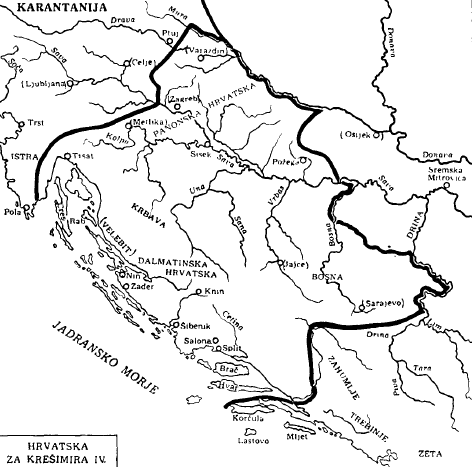Thread:
#Dalmatia through history.
Part II: How Dalmatia became #Croatia
In Part I (👇🏿) you could find out how the term Dalmatia originated and what it represented at the time of its origin (after 9 AD).
Now let's move on further.⬇️
#Dalmatia through history.
Part II: How Dalmatia became #Croatia
In Part I (👇🏿) you could find out how the term Dalmatia originated and what it represented at the time of its origin (after 9 AD).
Now let's move on further.⬇️
https://twitter.com/Antimon_Zg/status/1338799095444611080?s=20
The province of Dalmatia was large. It included the territories of modern states:
- Croatia
- Bosnia and Herzegovina (without Sava valley)
- Montenegro and
- (western) Serbia.
Well, how did we come from THAT Dalmatia to what we know today under the term Dalmatia? ⬇️
- Croatia
- Bosnia and Herzegovina (without Sava valley)
- Montenegro and
- (western) Serbia.
Well, how did we come from THAT Dalmatia to what we know today under the term Dalmatia? ⬇️

The Romans ruled this area continuously for 411 years (until 480).
In those 400 years or so, there have been several territorial reorganizations and changes in borders, we have no room to list them all. But one was crucial... ⬇️
In those 400 years or so, there have been several territorial reorganizations and changes in borders, we have no room to list them all. But one was crucial... ⬇️

In 395 the Roman Empire was divided into 2 parts.
1⃣ Western Roman Empire with capital in Rome.
2⃣ Eastern Roman Empire with capital in Constantinople (Istanbul, Turkey).
The reshaped Dalmatia (up to the Drina River) belonged to the Western Roman Empire. ⬇️

1⃣ Western Roman Empire with capital in Rome.
2⃣ Eastern Roman Empire with capital in Constantinople (Istanbul, Turkey).
The reshaped Dalmatia (up to the Drina River) belonged to the Western Roman Empire. ⬇️


AD 476 the Germans invaded and conquered Rome, formally ending the Western Roman Empire.
This is not the end of the Roman Empire itself; it survived until 1453 with its center in Constantinople.
You all know that, don't you?
I bet less of you know the following fact ⬇️
This is not the end of the Roman Empire itself; it survived until 1453 with its center in Constantinople.
You all know that, don't you?
I bet less of you know the following fact ⬇️
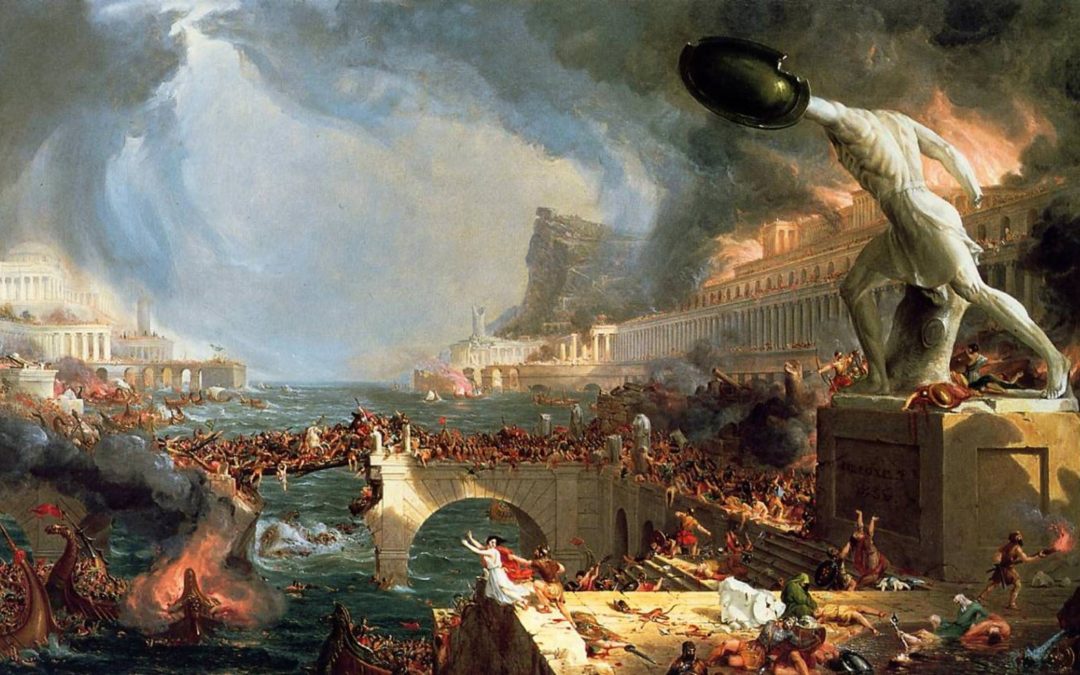
With fall of Rome, Dalmatia remained the only remaining independent relic of Western Roman Empire.
Its provincial ruler Julius Nepos was recognized by the emperor of Constantinople as the Western Roman emperor, so Western Roman Empire actually collapsed in 480 because... ⬇️
Its provincial ruler Julius Nepos was recognized by the emperor of Constantinople as the Western Roman emperor, so Western Roman Empire actually collapsed in 480 because... ⬇️

The Germans of king Odoacer conquered Dalmatia in 480, and then (also the Germans) the Ostrogoths of King Theodoric in 490.
It remained under the rule of Germans until 535. ⬇️

It remained under the rule of Germans until 535. ⬇️


It took the Roman Empire some 50-60 years to consolidate.
Emperor Justinian I (527-567) led in 535 the war against the Goths and by the end of his reign Empire managed to return part of the lost possessions in the west, including Dalmatia.⬇️


Emperor Justinian I (527-567) led in 535 the war against the Goths and by the end of his reign Empire managed to return part of the lost possessions in the west, including Dalmatia.⬇️
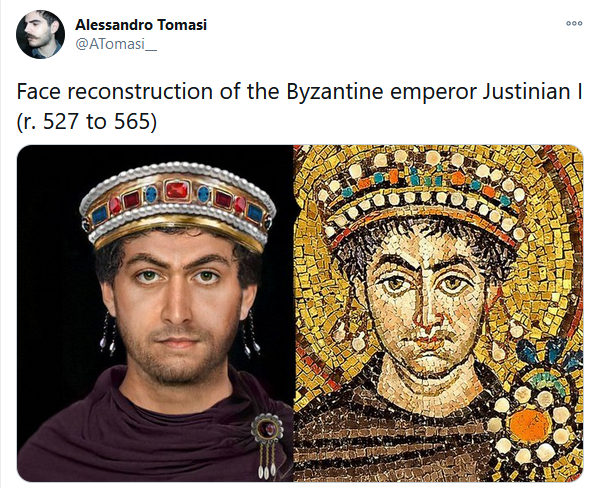


But the Empire could not sustain that range for long.
Pressed in the far east by the Persians, the Romans could no longer control the tectonics caused by the migration of peoples.
Towards the end of 6th century Dalmatia as an administrative-political creation began to collapse.
Pressed in the far east by the Persians, the Romans could no longer control the tectonics caused by the migration of peoples.
Towards the end of 6th century Dalmatia as an administrative-political creation began to collapse.

The area of Dalmatia began to be uncontrollably inhabited by Slavs.
The Roman population retreated to the coast.
When the immigration process was completed (beginning of 7th century), most of the province of Dalmatia was lost forever. ⬇️

The Roman population retreated to the coast.
When the immigration process was completed (beginning of 7th century), most of the province of Dalmatia was lost forever. ⬇️


All that remained under Roman rule were the Adriatic islands of Krk, Rab, Cres and Lošinj, a few old (Zadar, Trogir, Kotor) and several new (Split, Ragusa) towns on the coast.
THAT was Dalmatia.
Because it recognized Constantinople, historians called it Byzantine Dalmatia. ⬇️
THAT was Dalmatia.
Because it recognized Constantinople, historians called it Byzantine Dalmatia. ⬇️

Then the Franks appeared on the scene.
They were a German tribe that with a slight continuous growth until the end of 8th century became the most powerful kingdom of (and not only) Western Europe.⬇️
They were a German tribe that with a slight continuous growth until the end of 8th century became the most powerful kingdom of (and not only) Western Europe.⬇️

Under King Charlemagne (784-814) they conquered almost entire Apennines with Rome.
The Pope crowned him on Christmas Day of 800 as Western Roman emperor.
The Roman emperors in Constantinople did not recognize this title/coronation. In their eyes he was an usurper. ⬇️
The Pope crowned him on Christmas Day of 800 as Western Roman emperor.
The Roman emperors in Constantinople did not recognize this title/coronation. In their eyes he was an usurper. ⬇️

As a Roman emperor, Charlemagne wanted to restore power on the whole territory of Western Roman Empire.
Istria was conquered in 788, ex. Dalmatia and Pannonia in 803.
When they subjected Venice and (Byzantine) Dalmatia to their rule (806), a war broke out between two empires.⬇️
Istria was conquered in 788, ex. Dalmatia and Pannonia in 803.
When they subjected Venice and (Byzantine) Dalmatia to their rule (806), a war broke out between two empires.⬇️

The war ended in 812 with signing truce in Aachen.
The Roman emperor of Constantinople recognized Charlemagne the title of Western Roman emperor, and the Franks renounced their authority over Venice and (Byzantine) Dalmatia.
The harmony of East and West has been re-established.

The Roman emperor of Constantinople recognized Charlemagne the title of Western Roman emperor, and the Franks renounced their authority over Venice and (Byzantine) Dalmatia.
The harmony of East and West has been re-established.

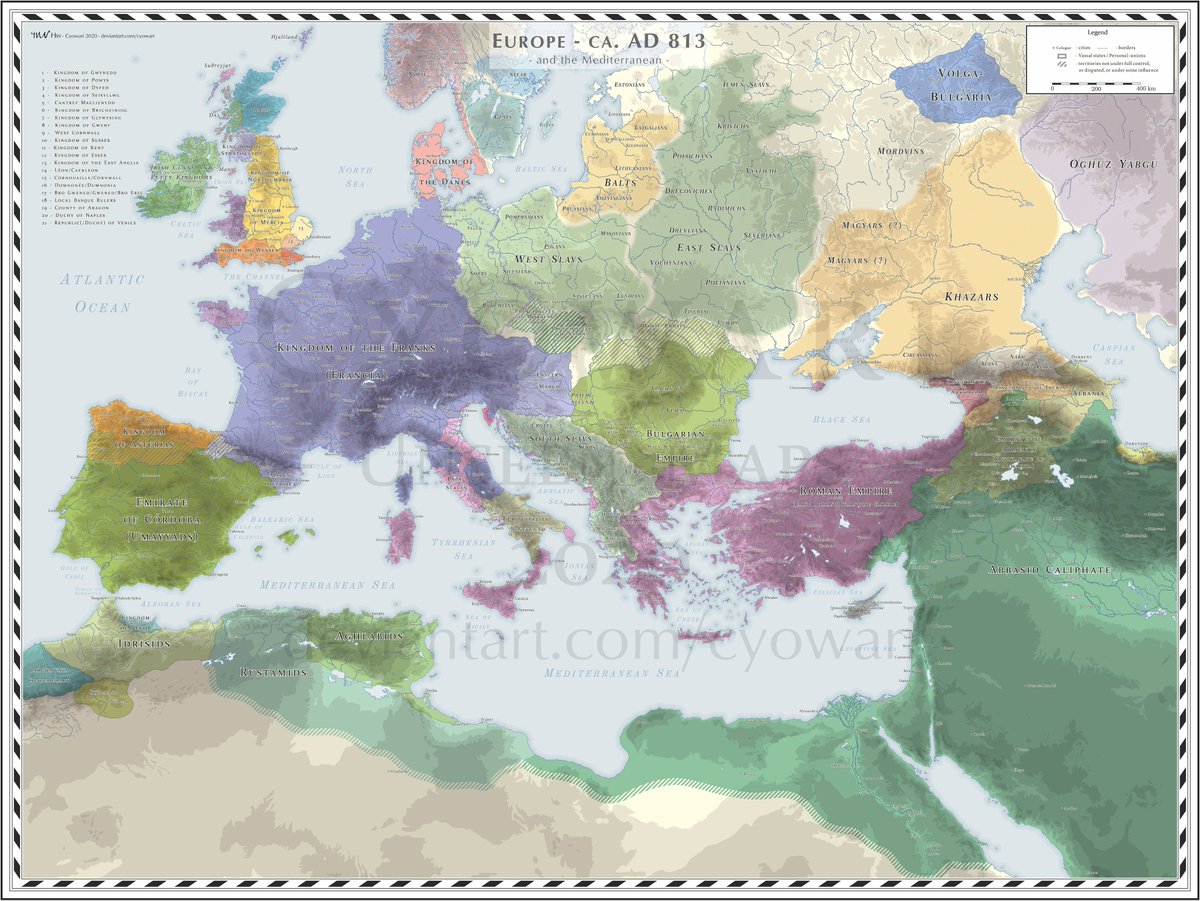
Unfortunately, we cannot determine the extent to which the Franks managed to restore power in the mainland of ex. Dalmatia.
According to the material remains, it was roughly to the rivers Vrbas and Neretva and in the coastal belt to the Bay of Kotor. ⬇️
According to the material remains, it was roughly to the rivers Vrbas and Neretva and in the coastal belt to the Bay of Kotor. ⬇️

What we do know is that ex. Dalmatia was not directly attached to the Frankish Empire, but was ruled by federates - vassal princes.
In ex. Dalmatia these federates were Croats.
The first known vassal prince was Borna (818-820) as the prince of Dalmatia and Liburnia.⬇️
In ex. Dalmatia these federates were Croats.
The first known vassal prince was Borna (818-820) as the prince of Dalmatia and Liburnia.⬇️

After Vladislav (821) and Mislav (839), Trpimir the prince of the Croats (840) appeared in the same area.
After Domagoj (864), Zdeslav (878), Branimir (879) and Muncimir (892), Tomislav (914) appeared, to whom the pope in a letter from 925 addresses as the king of the Croats.⬇️
After Domagoj (864), Zdeslav (878), Branimir (879) and Muncimir (892), Tomislav (914) appeared, to whom the pope in a letter from 925 addresses as the king of the Croats.⬇️

This means that in the hinterland of Byzantine Dalmatia Croatian medieval principality was formed, which by the end of the 9th/beginning of 10th ctry was transformed into a kingdom that the Roman emperor Porphyrogenitus called White Croatia (950 AD), listing its 141 counties.⬇️ 
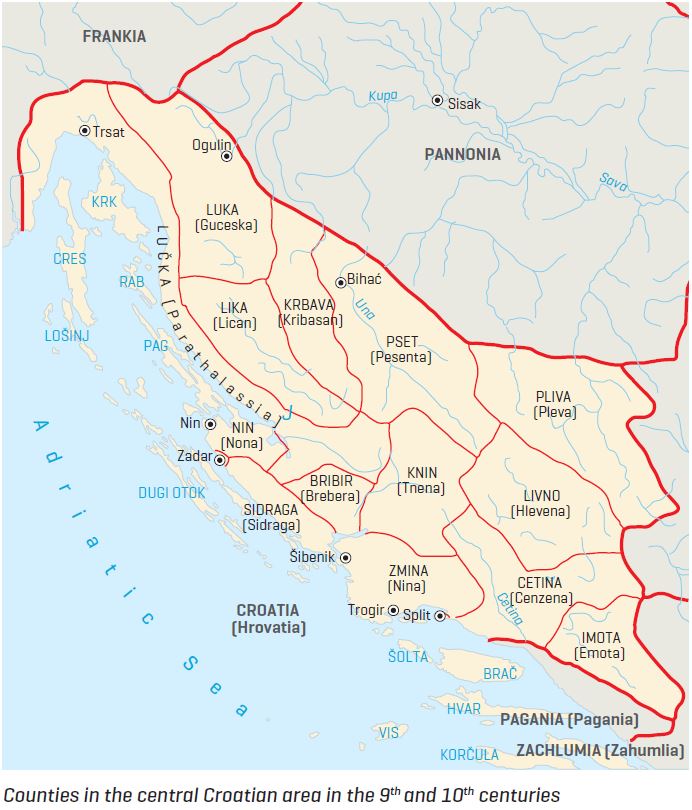
In the territory of ex. province of Dalmatia, in addition to Croatia, smaller political formations (so-called Sclavinias) were formed, mostly under the rule of the Roman Empire:
- Pagania (Neretva principality)
- Chelmia
- Travunia
- Diocla,
- Bosnia
- Raška (Serbia)


- Pagania (Neretva principality)
- Chelmia
- Travunia
- Diocla,
- Bosnia
- Raška (Serbia)
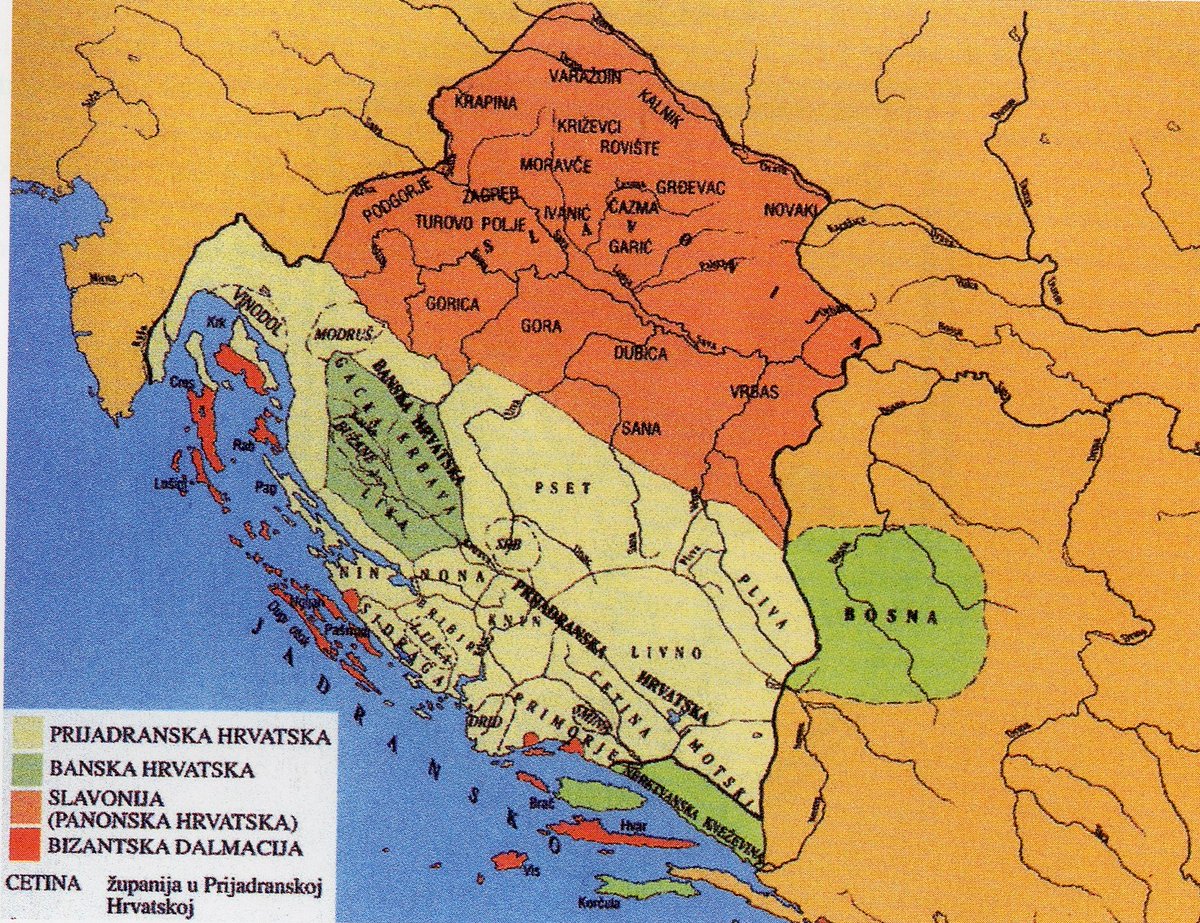


Those few towns on the coast and islands that were called Dalmatia from the 7th century were part of the Roman Empire, but occasionally Croatian rulers in the hinterland and occasionally Venice ruled over it IN THE NAME OF THE ROMAN EMPEROR.⬇️
Natural integration process of Dalmatia and geographical, cultural, religious and ethnically identical Croatia after 300 yrs was formally finished in 1075 with coronation of King Zvonimir.
They were politically united into one KINGDOM OF CROATIA AND DALMATIA.

They were politically united into one KINGDOM OF CROATIA AND DALMATIA.


• • •
Missing some Tweet in this thread? You can try to
force a refresh












